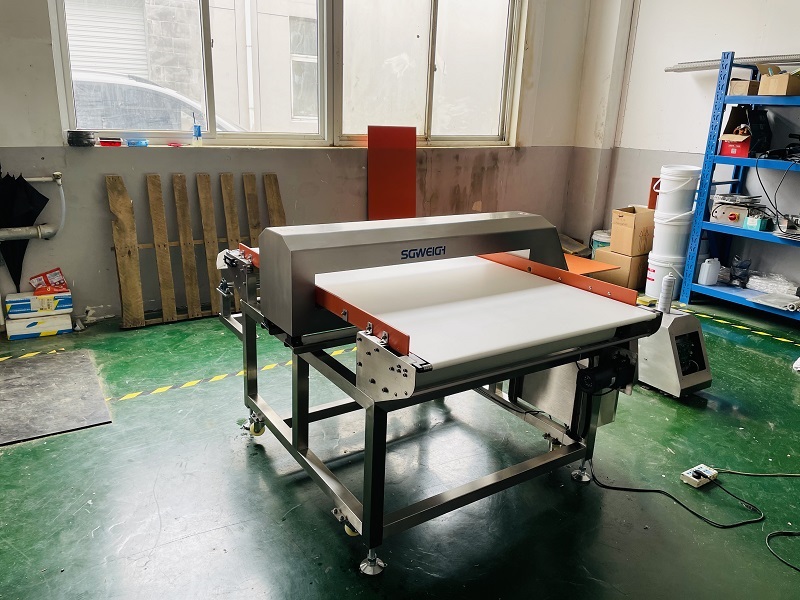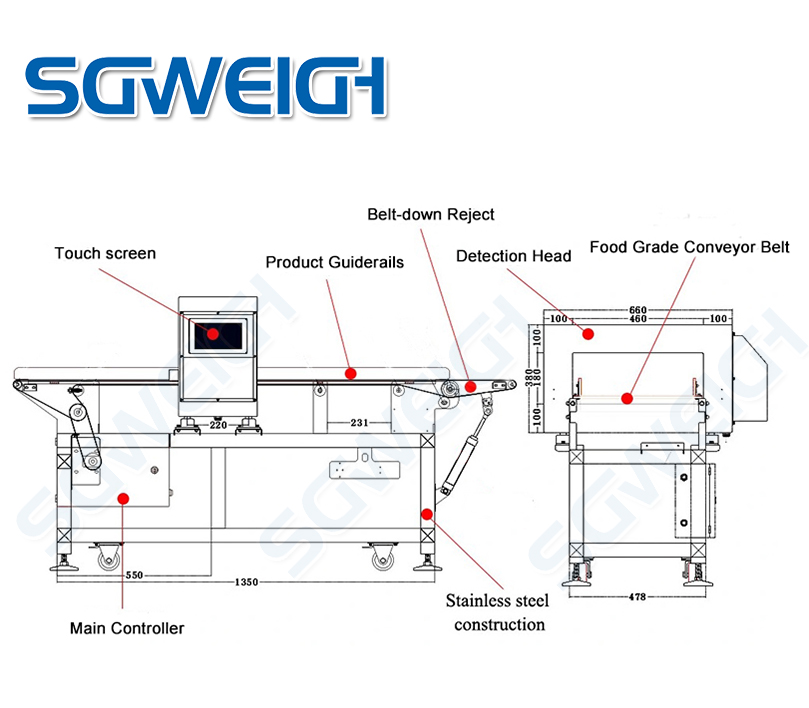Metal Detectors are widely used in food production lines. Their main goal is to detect and eliminate metal foreign matter in food to ensure product quality and food safety.
Metal detectors can be used to detect whether metal foreign objects are contained in raw materials before they enter the production line. This includes detecting metal foreign objects in raw materials from suppliers, raw material bags or containers.
At different stages of food production, metal detectors can be placed on the assembly line to monitor whether metal foreign objects are introduced during the production process, which helps prevent contamination during the production process.
In the food packaging process, metal detectors are usually placed at the last production stage to ensure that there are no metal foreign objects in the final packaged food products, which helps prevent the introduction of metal foreign objects into the packaging.
After food production is completed, metal detectors can be used to perform quality inspections on the final products, which helps ensure that the products leaving the factory meet quality standards and do not contain metallic foreign matter.
In many countries, food production companies need to follow food safety regulations, some of which require the use of metal detection equipment to ensure that there are no metallic foreign objects in the product. The use of metal detectors helps companies maintain compliance.
Metal detectors are often equipped with data logging capabilities that record information about detected metal foreign objects, which helps establish product traceability and enable investigation and correction if necessary.

Some advanced metal detection systems have multi-stage detection capabilities that can identify the location of metal foreign objects, helping to pinpoint problems and handle them in a timely manner.
Metal detectors are a key quality control measure in food production lines, helping to prevent the introduction of metal foreign matter into food products and ensuring product quality and food safety. The design and performance of these equipment are usually based on different food types, production processes and industries. Adjust and optimize standards.

Multi-Level Weight Sorting Machine